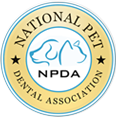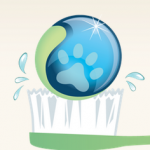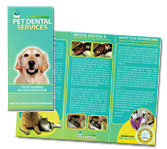“The services provided by Pet Dental Services have proven to be invaluable to our practice. Our clients appreciate the safety and convenience that non-anesthetic dentistry provides to their pets. Pet Dental Service’s staff is incredibly kind and patient with the pets in their care. Even some of our fearful patients are able to benefit from a full dental cleaning due to the gentle care provided by the PDS staff.”
7 Tips to Improve Your Pet’s Oral Health
Did you know that your pet’s oral health is very similar to your own?
A GROWING EPIDEMIC: Current statistics estimate that 95 percent of dogs and cats will have dental disease requiring correction at some time during their lives. Photo: National Pet Dental Association
Would you go months without brushing or years without visiting the dentist? According to the American Veterinary Medical Association (AVMA), 80 percent of dogs and 70 percent of cats have some form of dental disease by age 3. Many pet owners are unaware of the fact that dental disease can lead to painful oral infections, tooth loss, problems eating and bad breath. There is also medical literature that confirms a correlation between oral disease and systemic diseases that can affect your pet’s vital organs, including the heart, liver, and kidneys.
The National Pet Dental Association (NPDA) strives to educate pet owners on dental disease and how to prevent it. Here are a few suggestions to help ensure your pet’s oral health:
What you can do at home:
- It is important to become familiar with your pet’s oral cavity. Starting at an early age, you should touch and examine your pet’s mouth, looking for abnormal lesions or areas of pain.
- Oral rinsing and brushing reduces tartar and bacteria build-up. Make sure to only use pet safe toothpastes and rinses, as human products can be toxic for your pet.
- Offering your pet oral chews designed specifically for oral health is an easy and effective way to help reduce the build-up of tartar on the teeth. Always monitor your pet when using dental chews to avoid accidental choking.
What your veterinarian can do to help:
- Your veterinarian should complete an oral examination during every wellness visit to assess your pet’s oral health status.
- They will determine if your pet requires a dental cleaning under general anesthesia or a non-anesthetic dental cleaning.
- Regular dental cleanings are important to keep your pet healthy and pain free.
- Dental x-rays are also recommended periodically to expose dental disease that may be lurking below the gum line.
Anesthetic dental cleanings are necessary when your pet is showing signs of advanced dental disease. Full mouth x-rays can be taken while your pet is under anesthesia to reveal any pathology below the gum line. A non-anesthetic dental procedure is a dental cleaning completed without anesthesia. The non-anesthetic approach is a great option for preventive care. However, not all pets are suitable candidates for this procedure, and your veterinarian will determine which is the best option for your pet based on their overall health condition.
Please be aware that dental cleanings are a medical procedure, and for the safety and health of your pet, they should always be performed in a veterinary hospital, under the direct supervision of a licensed veterinarian. The risk of having your pet’s teeth cleaned outside of a veterinary hospital could be hazardous and even fatal for your pet. – See more at: http://www.petcarenews.com/health-and-wellness/7-tips-to-improve-your-pets-oral-health#sthash.mJeI5udu.dpuf
Dental care for your pet
Did you know that your pet’s oral health is very similar to your own? Would you go months without brushing or years without visiting the dentist? According to the American Veterinary Medical Association (AVMA), 80% of dogs and 70% of cats have some form of dental disease by age 3! Many pet owners are unaware of the fact that dental disease can lead to painful oral infections, tooth loss, problems eating, and of course bad breath! There is also medical literature that confirms a correlation between oral disease and systemic diseases that can affect your pet’s vital organs, including the heart, liver, and kidneys.
The National Pet Dental Association (NPDA) strives to educate pet owners on dental disease and how to prevent it. Here are a few suggestions to help ensure your pet’s oral health.
What you can do at home
- It is important to become familiar with your pet’s oral cavity. Starting at an early age, you should touch and examine your pet’s mouth, looking for abnormal lesions or areas of pain.
- Oral rinsing and brushing reduces tartar and bacteria build-up. Make sure to only use pet safe toothpastes and rinses, as human products can be toxic for your pet.
- Offering your pet oral chews designed specifically for oral health is an easy and effective way to help reduce the build-up of tartar on the teeth. Always monitor your pet when using dental chews to avoid accidental choking.
What your veterinarian can do to help
- Your veterinarian should complete an oral examination during every wellness visit to assess your pet’s oral health status.
- They will determine if your pet requires a dental cleaning under general anesthesia or a non-anesthetic dental cleaning.
- Regular dental cleanings are important to keep your pet healthy and pain free.
- Dental x-rays are also recommended periodically to expose dental disease that may be lurking below the gum line.
Anesthetic dental cleanings are necessary when your pet is showing signs of advanced dental disease. Full mouth x-rays can be taken while your pet is under anesthesia to reveal any pathology below the gum line. A non-anesthetic dental procedure is a dental cleaning completed without anesthesia. The non-anesthetic approach is a great option for preventive care. However, not all pets are suitable candidates for this procedure, and your veterinarian will determine which is the best option for your pet based on their overall health condition.
Please be aware that dental cleanings are a medical procedure, and for the safety and health of your pet, they should always be performed in a veterinary hospital, under the direct supervision of licensed veterinarian. The risk of having your pet’s teeth cleaned outside of a veterinary hospital could be hazardous and even fatal for your pet.
For more information and to find a professional service provider, contact the National Pet Dental Association, www.npda.info or 1.866.561.6717.
Study on Professional Outpatient Preventative Dentistry (POPD)
Can it be done safely and effectively without the use of general anesthesia?
By Mayra Urbieta, DMD, Stephanie Sur, DVM, Patrick Hardigan, PhD, Darren Pike, DMD, MS and Chad Orlich, DMD
A double-blind study of 12 dogs and 12 cats, randomly selected and divided by age group and history of anesthetic dental treatment, were used in the study. Subjects were treated with an experimental intervention (POPD) by a trained Pet Dental Services (PDS) technician and subsequently examined under general anesthesia by a board-certifi ed veterinary dentist (control). The examination consisted of inspection for any remaining subgingival calculus using compressed air, exposed full mouth radiographs and a complete oral exam. Parameters examined by both groups included recession, furcation, hyperplasia, resorption, missing teeth, fractures/attrition/ abrasion, supernumerary teeth, and probing depths.
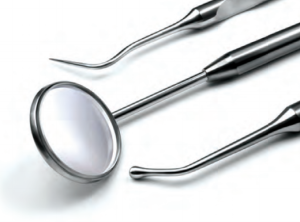 Results showed that the trained technicians and the veterinary dentist were both able to identify the seven dental conditions, although the technician appeared to report more pathology. After the POPD was successfully completed, no residual plaque or calculus was detected on any of the dogs or cats and there were no post-treatment complications. Although a POPD is not intended to be a substitute for anesthetic dentistry, it may prove to be a valuable supplemental treatment. The methods for the study included fi rst grouping the 24 animals by age and prior dentistry within the preceding two years. All were examined by a board certifi ed veterinary dentist to determine the appropriateness of a POPD, and evaluated with lab work to determine eligibility for general anesthesia. All subjects were deemed to be healthy and capable of undergoing the procedures required for this trial. The experimental intervention (POPD) was performed on all patients by PDS technicians who are qualifi ed by examination from the American Society of Veterinary Dental Technicians (ASVDT), First Aid/CPR certifi ed by the American Red Cross, and with a minimum of three years of experience working in a veterinary hospital. They were instructed over a six-month period, with a training program developed in part by a boardcertifi ed periodontist and PDS, and overseen by multiple veterinarians.
Results showed that the trained technicians and the veterinary dentist were both able to identify the seven dental conditions, although the technician appeared to report more pathology. After the POPD was successfully completed, no residual plaque or calculus was detected on any of the dogs or cats and there were no post-treatment complications. Although a POPD is not intended to be a substitute for anesthetic dentistry, it may prove to be a valuable supplemental treatment. The methods for the study included fi rst grouping the 24 animals by age and prior dentistry within the preceding two years. All were examined by a board certifi ed veterinary dentist to determine the appropriateness of a POPD, and evaluated with lab work to determine eligibility for general anesthesia. All subjects were deemed to be healthy and capable of undergoing the procedures required for this trial. The experimental intervention (POPD) was performed on all patients by PDS technicians who are qualifi ed by examination from the American Society of Veterinary Dental Technicians (ASVDT), First Aid/CPR certifi ed by the American Red Cross, and with a minimum of three years of experience working in a veterinary hospital. They were instructed over a six-month period, with a training program developed in part by a boardcertifi ed periodontist and PDS, and overseen by multiple veterinarians.
The POPD 11-step protocol used by PDS technicians follows; however, steps 3, 10 and 11 were omitted in order to maintain the double-blind study design.
STEP 1: Medical and behavioral history check.
STEP 2: Pre-exam – physical and oral. A check of joint discomfort or pain is conducted to determine a pet’s candidacy for the procedure since restraint is necessary during a POPD. A complete extra-oral and intra-oral exam is completed, with a specific focus on tooth symmetry, swelling and pain. An evaluation is also performed on each tooth, and surrounding gingiva, for pathology including calculus levels, compromised teeth, gingival condition and periodontal pockets. At this point, in a clinic setting, for 62.5% of the subjects, the technician would have stopped the procedure after the exam and discussed the findings with the veterinarian because he/she would be recommending an anesthetic dental treatment.
STEP 3: Treatment plan – a treatment plan is then generated through a staff-doctor-client partnership. Treatment plans can range from simply completing the POPD procedure to recommending that the professional oral hygiene procedure be performed under general anesthesia. The treatment plans include home care instructions and a recall date for an anesthetic dental treatment or a maintenance POPD procedure, if necessary. This step is crucial in ensuring the patient receives the proper care for his/her periodontal and health condition.
STEP 4: Supra-gingival scaling – a POPD begins with the removal of supra-gingival deposits of plaque and calculus from the buccal, lingual and interproximal surfaces. A combination of forceps, hand instruments and ultrasonic piezo scaling are used for plaque and calculus removal.
STEP 5: Sub-gingival scaling and curettage – plaque and calculus deposits are thoroughly removed from the sub-gingival areas. This procedure is not performed on a patient with stage three or four periodontal disease. This reinforces the need for a pre-examination (Step 2) for patient candidacy.
STEP 6: Post dental probing – a six-point probing of each tooth is performed. A thorough probing is vital for recognizing and communicating areas of concern to the doctors and clients. All abnormal pocket depths are noted for the final chart.
STEP 7: Machine polish – hygienists then perform a machine polish using a pumice or polishing paste. Polishing will assist in smoothing out minor defects of the enamel which may have occurred during the procedure, thus aiding in the prevention of future plaque accumulation. It will also help with the removal of certain enamel stains.
STEP 8: Oral rinse – any diseased tissue, plaque or paste remnants are removed through an irrigation of the oral cavity. The oral cavity and gingival pockets or sulcus are flushed with a chlorhexidine-based solution. 36 IVC Fall 2013
STEP 9: Post-check and charting – a complete evaluation of each tooth is performed, checking for any retained calculus with a periodontal probe and/or explorer. The dental chart is completed.
STEP 10: Veterinarian and staff communication – a veterinarian examines the oral cavity with a corresponding evaluation of the dental chart to ensure complete pathological notation. A posttreatment oral health care plan is prepared for the patient.
STEP 11: Client education – fi nally, the hygienist educates clients about the importance of maintaining good oral health in their pets. They will also review the pet’s dental experience and chart, review the importance of continuous recalls and explain to them the many options regarding home care. They also provide brushing demonstrations with their pet, when necessary.
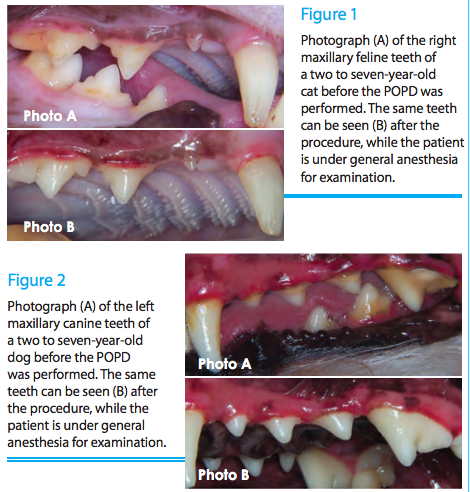 Following the completion of POPD treatment by the trained technician, all patients were immediately put under general anesthesia and examined thoroughly by a veterinarian. The veterinarian used compressed air to dry the gingival margins and properly inspect for any remaining subgingival calculus, exposed full mouth radiographs, and fi lled out a pre-designated chart. The same chart was used by the veterinarian for their pre-treatment examination. Also noted was gingival recession, furcation involvement, gingival hyperplasia, tooth resorption, missing teeth, supernumerary teeth, fractures/attrition/abrasion, and probing depths. The veterinary staff also took before and after pictures of each patient (See Figures 1 and 2 below for examples). All the patients for which the technician recommended anesthetic dental treatment were found to have radiographic fi ndings by the control group’s examination.
Following the completion of POPD treatment by the trained technician, all patients were immediately put under general anesthesia and examined thoroughly by a veterinarian. The veterinarian used compressed air to dry the gingival margins and properly inspect for any remaining subgingival calculus, exposed full mouth radiographs, and fi lled out a pre-designated chart. The same chart was used by the veterinarian for their pre-treatment examination. Also noted was gingival recession, furcation involvement, gingival hyperplasia, tooth resorption, missing teeth, supernumerary teeth, fractures/attrition/abrasion, and probing depths. The veterinary staff also took before and after pictures of each patient (See Figures 1 and 2 below for examples). All the patients for which the technician recommended anesthetic dental treatment were found to have radiographic fi ndings by the control group’s examination.
Discussion
Since plaque is the initiating cause of gingivitis and subsequent periodontitis, assessment of plaque reduction is a key step in determining the effi cacy of canine and feline dental health products and procedures. The present pilot study implies that performing a dental prophylaxis on a cat or dog without the use of general anesthesia can be done in a safe and effi cient manner by an appropriately trained technician. Not only were the dental prophylaxes completed on all 24 patients, but also there was no residual calculus remaining supra- or sub-gingivally upon thorough inspection by the veterinarian. In addition, there were no post-treatment complications, which again attest to the possibility of performing such a procedure in a safe manner. This procedure must be performed under the supervision of a licensed veterinarian. Therefore, it is crucial to keep in mind the scope of a procedure such as POPD. Like any other procedure performed by an auxiliary, POPD is to be used at the discretion of the veterinarian, for he or she is ultimately responsible for the overall health of each patient. It is not intended at any time to replace anesthetic dentistry, but to support it, meaning that it is up to the doctor to decide when and for what patients the service is appropriate. Also, it should be noted that if this were not a research setting, the technician would have stopped the POPD after the exam in 62.5% of the patients, all of which were also found to have radiographic fi ndings, and discussed the fi ndings with the veterinarian due to the nature of the present pathology.
The Importance of Dental Radiographs
When you take your pet in for his or her annual dental cleaning, your veterinarian or veterinary dental specialist may make a recommendation to take radiographs, or x-rays, of all your pet’s teeth based on the initial oral examination.
Many animal patients referred for a routine teeth cleaning procedure have additional oral problems, and full-mouth radiographs allow your veterinarian to view the internal anatomy of the teeth, the teeth roots, and the bone that surrounds the roots. Additionally, the initial x-rays provide a base line for future comparison as your animal ages.
These intra-oral radiographs are taken while your pet is under anesthesia because animal patients do not know how to cooperate when small radiographic films or digital sensors are placed in their mouths. The films must be placed at specific angles against the teeth with the mouth both open and closed to get the best diagnostic shots, and an animal’s instinct is to chew and swallow anything it feels on its tongue. However, the dental x-ray procedure is very quick and painless and can generally be accomplished in less than 10 minutes when performed by a trained technician.
Dental radiographs help your veterinarian evaluate the health of your pet’s teeth by identifying the following problems not seen by the naked eye:
- Tooth fractures
- Retained deciduous teeth (baby teeth that failed to erupt at the proper time)
- Tooth root abscesses or infections
- Areas where teeth appear to be missing (broken roots or parts of teeth may be hidden under the gumline)
- Impacted teeth (teeth that are wedged in and can’t erupt normally)
- Feline Resorptive Lesions (painful holes or erosions on the surface of the teeth found mainly in cats)
- Bone or soft tissue tumors
- Height of the bone below the gum line
- Bone changes and degree of bone loss due to periodontal disease or some other cause
- Size of the periodontal ligament space
- Presence, or disappearance, of the “lamina dura,” the bone bundle attached to the periodontal ligament
These last four diagnostic statistics help your veterinarian determine the degree of possible periodontal disease, predict future tooth and bone loss, and allow for a full treatment protocol to be recommended for you pet.
POPD – Non-Anesthetic Dental Cleaning For Dogs and Cats
Veterinarians commonly recommend prophylactic, or preventive, anesthetic dental cleanings to their patients on an annual basis to combat the periodontitis (dental disease) that can lead to other major health issues in dogs and cats. But what can a veterinarian, or a pet owner, do to prevent dental disease in young animals before it occurs, as well as maintain a pet’s good oral health after dental x-rays and an anesthetic cleaning, and when the pet in question is not a good candidate for general anesthesia?
POPD is a new, non-anesthetic veterinary dental cleaning procedure that solves that dilemma using highly-qualified and trained certified dental technicians in your veterinarian’s own clinical setting.
What is POPD?
Professional Outpatient Preventive Dentistry (POPD) is a term developed by Pet Dental Services to describe their non-anesthetic teeth cleaning procedure performed on dogs and cats. Performed under the direct supervision of a veterinarian, POPD utilizes a type of gentle proprietary behavioral management to allow your pet to have a complete visual dental examination and preventive cleaning of all tooth surfaces without the use of a general anesthesia.
Pet Dental Services formed the National Pet Dental Association to increase pet owner awareness about the dangers associated with seeking medical procedures such as dental cleanings without veterinary supervision. The practice of on-site veterinary supervision is one of many policies that differentiate the POPD from the Non-Professional Dental Scaling (NPDS) typically executed by non-professionals in non-veterinary facilities, often using sub-standard and dangerous methods. Always make sure a veterinarian is present during your pet’s medical procedures!
The NPDA’s Board of Directors includes several highly-regarded human periodontists and dental veterinary technicians who oversee the extensive training of the certified dental technicians performing the POPD procedures. These technicians are mandated to treat their animal patients much as a human pediatric dental patient is treated – with patience and gentle kindness to avoid frightening and possibly injuring the patient.
How is a POPD procedure performed?
Your pet’s veterinarian must first recommend the non-anesthetic procedure for your dog or cat before one of Pet Dental Services skilled and highly-trained certified dental technicians will perform the cleaning. Typically, those animals with severe gingivitis, caries, fractured teeth or stomatitis are poor candidates for POPD.
The certified dental technician then evaluates your pet’s temperament to see if the patient’s behavior will allow for a successful procedure. If a pet is overly fearful or anxious and it is determined that the non-anesthetic treatment will not be a viable option, the hygienist will recommend an alternative treatment approach. By approaching patients calmly and patiently, and introducing each phase of the treatment slowly, the hygienist is able to build enough trust with your pet employing gentle behavior management so that the tools of traditional veterinary dentistry can be used to clean the teeth.
Under the on-site supervision of your veterinarian, the hygienist performs a thorough oral exam of your pet’s gums and mouth looking for loose teeth, abscesses and pockets of infection, fractured teeth, bone degeneration, tumors, and other conditions that necessitate your vet recommending an anesthetic dental procedure. If no such problems are found, your pet’s teeth are scraped above and below the gum line – meaning all plaque and tartar is gently removed and rinsed away. Scaling is accomplished using a piezoelectric scaler that uses ultrasonic sound waves to remove hard dental calculus without heating the surface of the tooth. The teeth will be machine-polished to remove the incidental micro etching where food particles and bacteria are most likely to adhere, and all tooth surfaces are rinsed of debris.
Your pet is fully conscious and awake during the entire procedure; your pet has complete control over its gag reflex so risk of aspiration is not a concern.
What type of pet does the procedure work best for?
POPD or Non-anesthetic dental cleanings are a great alternative for older pets, and for those pets with chronic liver, kidney, or heart disease that might not be good candidates for general anesthesia. The hygienist sits at eye level with your pet and uses a variety of proprietary holds to maintain control while keeping your dog or cat calm and comfortable; POPD may also works well for those animals that become anxious or upset during long visits at the vet clinic.
How can veterinarians and pet owners best use the POPD program?
POPD is not intended to replace traditional veterinary dentistry; rather, it serves as an additional therapy to anesthetic dental procedures.
When performed correctly, and prescribed appropriately by veterinarians, POPD can be used as maintenance therapy between anesthetic dentals for younger pets with a high predisposition for dental disease, or for high-risk patients unable to safely undergo anesthesia. Pet owner compliance – with at-home dental brushing – can help with prevention of further dental disease and that prevention increases with more frequent routine cleanings and oral examinations.
National Pet Dental Association
Did you know that your pets’ oral health is much like your own? Would you go months without brushing or years without visiting the dentist? According to the American Veterinary Medical Association (AVMA), 80% of dogs and 70% of cats have some form of dental disease by age 3, this is a huge number! The number one reason dental disease goes untreated is that in most cases, there are few signs or symptoms until very late in the disease process. Untreated dental disease can lead to many devastating issues such as severe bones loss, loose teeth, painful and swollen gums, problems eating, and of course bad breath! Also, recent studies show a correlation between oral disease and diseases that can affect your pet’s vital organs, including the heart, liver and kidneys.
The National Pet Dental Association (NPDA) was created to help educate pet owners on the importance of proper dental care and the different options of dental treatment that are available. Previously, it was not unusual to wait until a pet had symptoms of severe dental disease already present before care was provided. At that point, it was common for the pet to need teeth extractions and more involved treatment. Throughout the years, veterinary dentistry has progressed to give owners more options to combat dental disease. This is an exciting time in veterinary medicine because the link between oral health and overall patient health is so connected.
The most important thing to consider when seeking dental treatment for your pet is that a professional dental cleaning is a medical procedure, so it must be performed under the direct supervision of a licensed veterinarian. Second, depending on the condition of your pet’s oral health, you have options as to what type of cleaning is best suited for your pet, whether it be a traditional anesthetic dental, or a dental cleaning without anesthesia. The first step is to schedule an oral exam for your pet with your veterinarian this way they can determine the best treatment plan for your pet. Anesthetic dentals are necessary when your pet is showing signs of advanced dental disease. Full mouth x-rays can be conducted while you pet is under anesthesia, dental x-rays are important so they can expose potential disease under the gum line. For less advanced cases non-anesthetic dental cleanings can be done. A non-anesthetic dental procedure is a dental cleaning completed without anesthesia on pets that do not have significant dental disease. The non-anesthetic approach is a great preventative cleaning and it is conducted by utilizing behavioral management and proprietary holds to ensure the pet’s safety throughout the dental procedure. There are also instances where the veterinarian may not want to anesthetize a pet due to a medical condition, and they will then suggest a non-anesthetic dental cleaning.
Understanding “who” will be cleaning your pet’s teeth is a key factor in seeking proper dental treatment. There are many places, mainly grooming shops and pet stores, that claim to perform a dental cleaning. While it is okay for them to brush your pet’s teeth, a dental cleaning is a medical procedure. The risk of having your pet’s teeth cleaned by an uneducated layperson, with little or no formal training, outside of a veterinary hospital, could be hazardous and even fatal for your pet. Actually, it is even considered illegal in many states. You wouldn’t go to your barber or hairdresser to get your teeth cleaned, would you? Then you should not take your pets to a groomer or pet store to have their teeth cleaned.
Professional dental cleanings should be performed annually – semiannually depending on your pets individual needs and your veterinarian’s recommendations. Also dental home care can help reduce bacteria build up in between professional dental cleanings. There are so many wonderful dental products on the market for pets. Keep in mind that human dental products should never be used on pets due to the high levels of xylitol and fluoride that may be toxic for your pet if ingested. For more pet safety advice visit www.NPDA.info.
Remember pets are unable to verbalize painful oral disease so regular dental cleanings and oral exams are so important in keeping our pets happy and healthy!
For more information and to find a professional service provider for your pets dental care needs, please visit or call the National Pet Dental Association, www.npda.info or 1.866.561.6717.
The Importance of Animal Dental Care
Did you know that the 2011-2012 American Pet Products Association National Pet Owners Survey reports that there are over 78 million pet dogs and over 86 million pet cats throughout the country – almost one in three homes has a pet! Most owners maintain good vaccination and healthcare practices for their pets, but unfortunately dental care for the animal is often overlooked.
An animal dental care routine will help prevent serious health issues for cats and dogs. In fact, animal dental care is as important as vaccinations and other preventative health procedures like annual checkups. However, most pet owners do not incorporate pet dental hygiene into a daily or even annual routine. According to the American Veterinary Dental Society, 70 percent of felines and 80 percent of canines show symptoms of oral disease by the age of two. Oral disease is progressive and will worsen each year so it is important to stop it in its tracks.
Common Animal Dental Care Problems
Healthy pet gums look pink and healthy teeth are not discolored or covered in plaque. Signs of early gingivitis include a mild amount of plaque build-up on the teeth and gums that appear mildly red. In advanced gingivitis or periodontitis, plaque is present beneath the gum line and the gums often appear very red and swollen. They may even bleed when touched or when your pet eats.
Early periodontitis is the next stage of oral disease and it is the most common pet dental problem. At this point, the pet has redness, swelling, bleeding and sometimes overgrown gum tissue or hyperplasia. Many pets with periodontitis can also suffer from a 10 to 30 percentage loss of bone density in their jaw. In advanced periodontitis, there are large amounts of hard tartar beneath the gum, the gums are red, receded, bleed easily and show deep pockets. Teeth are loose or missing, and bone loss is over 30 percent. Periodontitis is irreversible, but the damage can be stopped so that it does not continue to progress. Animal dental care helps prevent the progression of oral disease and overall pet wellness.
Dental disease in animals is an invitation for other pet health problems, just as in humans. Bacteria in the pet’s mouth can find pathways to the lungs, bladder, kidneys and heart where they don’t belong and can be potentially harmful and shorten the lifespan of your pet. This can also be very painful.
Signs & Symptoms of Animal Dental Care Problems
Identifying animal dental care issues takes a bit of detective work, but if you know the signs and symptoms you may be able to prevent your pet from unnecessary pain and illness. A visual inspection of the teeth and gums is a good place to start, but there are other indicators of a pet with dental health issues. Bad breath and unusual or excessive drooling and pawing at the mouth can all be signs of an animal with dental problems.
Good pet oral hygiene begins at home and at an early age. While there are a number of products on the market for at home care, remember that just like humans pets need professional checkups as well. Always make sure your veterinarian inspects your pet’s mouth on every visit to insure that your dog or cat does not have any signs of dental disease. And always make sure to use Veterinary approved dental products as human products could potentially be harmful for our pets if ingested.
What Bleeding Dog Gums Can Indicate
Warning! What Bleeding Dog Gums Can Indicate
Bleeding dog gums and red gums are associated with inflammation and gingivitis. These are indicators of poor oral health for your dog or cat. Many pet owners fail to recognize the need for brushing a dog’s teeth or professional dental cleanings. As a result tartar and plaque buildup on the teeth and gums and lead to dental conditions such as gingivitis and periodontal disease. Bleeding dog gums most often are a result of these conditions and inflammation. Continue reading →

 Dr. Melissa Byers
Lake Forest Animal Clinic
Lake Forest, CA
Dr. Melissa Byers
Lake Forest Animal Clinic
Lake Forest, CA

